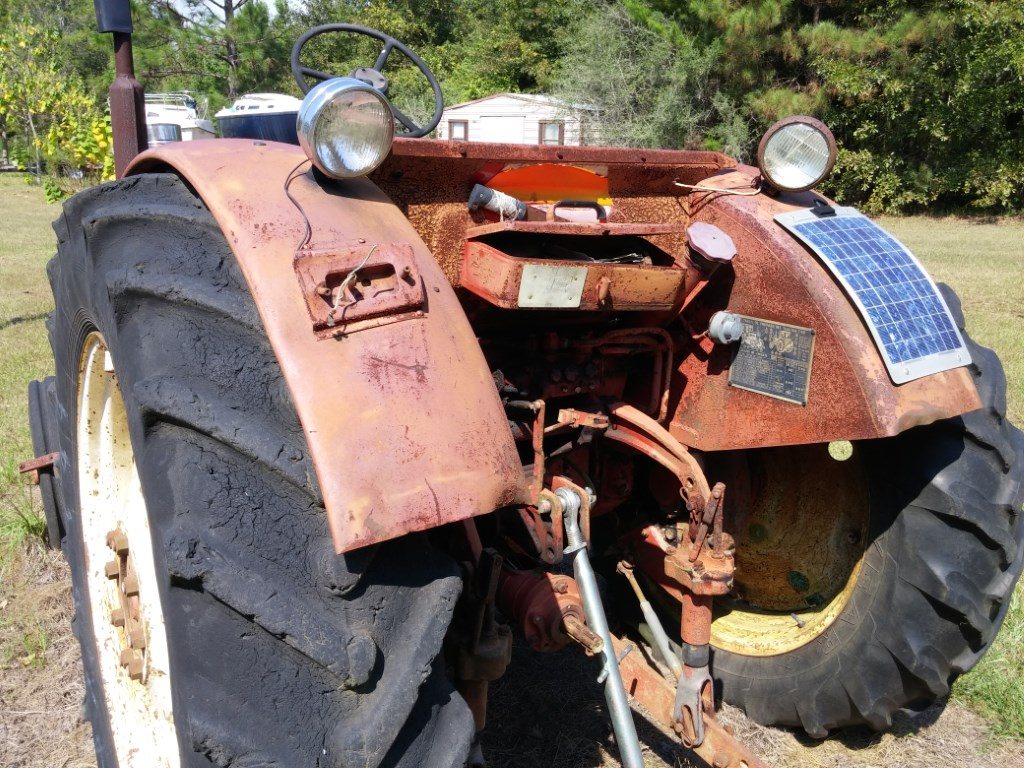My first solar project was to put 4 tiny 6 volt solar panels on the top of the instrument panel of my old Piper TriPacer. The panels were little more than experimenter toys made from solar cell scraps in a plastic frame. 40 years ago you took what you could get in solar. Old airplanes have tiny batteries, crappy starters and high displacement engines. Add in flying them only on the weekends and you can end up having to change out the very expensive tiny battery every year, or starting it the old fashion way by flinging the prop by hand and hoping the plane doesn’t run off without you. That installation involved about 1/8 amp of current, if that much, and until the panels shook apart I didn’t have to buy a new battery or hand start the plane. Just a little trickle charge is all it takes to keep a vehicle battery ready to go and extend its life.
Those panels probably cost $80/watt way back then. Adding in a diode to prevent back flow, a fuse to make the feds happy and a Form 337 to make it legal and I was in business. If the plane had had a cigarette lighter plug I could have avoided the paperwork by making it portable.
Since then, panels have gotten a bit cheaper, but the installation is pretty much the same, as is the benefit. Nowadays, though, I usually do it on a tractor or help a neighbor put a solar charger on a 4-wheeler, tractor or motor home. Baby Brother has an old pickup he doesn’t use much, but it always starts, thanks to a pair of 5 watt modules mounted on a frame in the truck bed. Using a small module, like 5-10 watts, you don’t really need a charge controller, as long as you are using a so-called 12 volt panel. FYI, a 12 volt panel will usually put out about 18-20 volts without a load. If you want to mount a 300 watt, 24 volt panel on your truck’s tonneau cover, then you definitely will need a charge controller, with MPPT to get the voltages compatible. Sun Electronics often has some of these small panels for small projects.
After my airplane phase, there came a tractor phase and a lot of them followed me home. That’s a lot of tires and batteries to keep up with if you want to keep them going. Some of them go and some of them went. On one of my old Rooskie tractors I put a stainless steel marine panel on the fender. They claimed it was flexible and if you tighten the screws enough it actually bends. And still works! I know the old beast looks pretty rough, but the decade-old battery will start it right up! Yeah, I know the back tires are on backwards. It helps me get out of trouble easier than getting into it.

The installation involves only a surplus panel, some screws and an inline fuse holder. Connections are made directly to the battery, red to + and black to -. A blocking diode is built into the module. My newest tractor, only 21 years old, is about to get a similar mod to keep its 5 year old battery going for a long time.
If you have this setup on the end of the tractor hanging out the back of a shed, you can easily connect an overhead light, using a 12v LED bulb, using a plug or big gator clips. These Belarus tractors came with a socket just for plugging into a light. Very handy.
A little project like this can be a great confidence builder for the solar beginner and produce some immediate benefits, like not having to buy so many batteries or break out the jumper cables as often. Too bad solar can’t fix tires! –Neal
